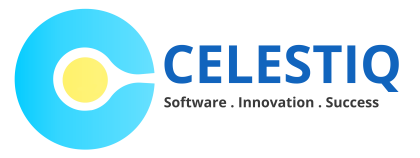Introduction
If you’ve been searching for ways to turn your software-as-a-service (SaaS) product dream into reality, then you’ve come to the right place. Successful SaaS product development is no easy feat – it takes dedication and innovative thinking to create a program that resonates with users.
But don’t feel overwhelmed! We want to offer some insight into the world of SaaS product development, so you can maximize the effectiveness of your strategy and stay ahead of the curve. Our goal is to give you a comprehensive guide on how to develop a successful SaaS product – from pre-launch planning and market research, all the way through launch day.
Let’s dive into the strategies behind successful SaaS product development!
Evaluating Your Goal & Identifying Your Audience
Before you can even think about developing your SAAS product, you need to first evaluate what goal you’re trying to achieve. This can involve asking yourself questions like: Who am I creating this for? Will this help me achieve my goal of making a profit? Is this something that my target audience will actually use? Taking the time to ask yourself these questions will give you the clarity and guidance you need to create a successful SAAS product.
Once you’ve identified your goal, it’s important for you to also identify who your target audience is. Doing market research is key here; by understanding who will be using your product and what their needs are, you’ll be able to better tailor the product and design it with them in mind. This can involve surveying current or potential customers, researching demographics in your industry, or simply analyzing existing products in the space to get an idea of what works and what doesn’t.
Researching Competitors and the Market
It’s important to understand what your competitors are offering, as well as the overall market you’re entering. Research into this gives you insight into trends, customer needs, and customer expectations. It can also help you identify potential partners and collaborators for future development, as well as gaps in the market that may represent opportunities for your own product.
The key is to look beyond just the features of competing software and really dig into how customers interact with it. Consider their level of satisfaction and how they might benefit from the features or capabilities that your product offers. You can also examine pricing models and revenue opportunities to determine which strategies could be successful for your own SAAS product.
Finally, understanding the competitive landscape is not enough; you also need to be aware of changes in technology that could impact or improve your product. Staying on top of new innovations and technology in your industry is essential for developing a successful SAAS product.
Designing & Developing Your Solution
As a SAAS product developer, you’ll need to design and develop your solution. This is all about the technical development, from building the software architecture to coding and integration.
Here are some tips for getting your product up and running:
- Put together a tech roadmap: Think of this like a plan detailing how you’ll get from where you are now to where you want to go with your SAAS product. Your roadmap should include detailed plans for development, testing, deployment, and support.
- Create a minimum viable product (MVP): Developing an MVP gives you something tangible to show investors and users. It’s also a great way to get early feedback on your product before launching it publicly.
- Hire an experienced team: You’ll need people who can take the technical specifications of your product and bring it to life — that means engineers, developers, testers, designers and data scientists if needed. Look for people with experience in developing software-as-a-service products specifically.
- Utilize agile methodology: Agile methodology helps streamline the development process by breaking it down into small sprints with specific tasks that need to be completed in order for the project as a whole to stay on track. This approach also makes it easier for teams to adjust quickly as customer requirements evolve over time.
- Read up on developments in the industry: Keep an eye out for changes in technology that might affect your product — anything from new programming languages or frameworks to cloud computing trends or regulations related to data privacy — so you can adjust accordingly and stay competitive in the market.
Testing & Iterating Your Product
Testing and iterating your SAAS product is paramount to its success, and it’s important to develop a strategy that works best for you. Doing so will help you identify areas that need improvement, as well as opportunities for new features.
Define Your Metrics
The first step in successful testing and iteration is to define your metrics. You should have an expert understanding of what should be measured, including user engagement, retention rate, customer lifetime value, cost of acquisition, and average revenue per user. These are all key components of the success of a SAAS product, so having the right metrics in place will help you identify where your product can improve.
Beta Testing
Beta testing involves collecting feedback from potential users who can test your product before it’s launched to get an idea of how they like it and how they would use it. This is also a great way to find out any bugs or areas that need improvement before your product hits the market.
A/B Testing
A/B testing allows you to make changes to your interface or features in order to improve the user experience and engagement levels. This process involves running experiments on different versions of the same concept in order to pinpoint which version performs better than the other.
By taking these steps and developing a strategy for testing and iterating, you’ll have a much better chance of creating a successful SAAS product with high ROI.
Launching & Growing Your Product
When it comes to launching and growing a successful SAAS product, it’s important to have a good strategy in place. Here are some creative strategies you can use to set your SAAS product up for success:
Prioritize Product Quality
It’s impossible to overestimate the importance of having a quality product. Customers won’t continue to use or pay for a low-quality product, so make sure that you focus on creating something value-driven and reliable. To release a quality product, it’s also essential that you test and monitor your software before launch and beyond—so that any bugs can be fixed as soon as possible.
Leverage Word of Mouth
Word of mouth marketing is incredibly powerful when it comes to spreading the word about your SAAS product. Focus on creating experiences that will make customers talk about your product favorably, such as providing stellar customer service or offering free trials or beta tests of your software prior to launch. This is also where social media can come in handy—social media sharing can help reach potential customers far more quickly than traditional marketing methods, for much less cost!
Invest in User Experience
Having an easy-to-use interface is one of the most important elements of successful software products as users don’t want to spend hours trying to figure out how to use it. Make sure that you design user experiences with simplicity and usability in mind, so that customers can quickly understand how they can get the most out of your product. Also consider including pop-ups or tutorials within the interface itself so users know what steps they need to take right away.
Managing Data & Performance Measurement
Data is a key part of any successful SAAS product. To develop a successful product, you must understand the importance of data and how it can be used to your advantage. So, how do you manage data and performance measurement for a SAAS product?
Define Your Goals
The first step in managing your data is to set clear, achievable goals to determine what results you want from your product. Once you have defined the goals, you must identify the metrics that will help you measure performance and progress towards these goals. This can include customer acquisition, customer retention, and customer lifetime value (CLV), among others.
Track Performance Metrics
Once you have identified the metrics that are important for measuring your performance and progress towards your goals, it’s time to start tracking them. To do this effectively, it’s important to use a tool such as Google Analytics or Tableau that provides real-time insights into your data so that you can quickly identify changes in performance or any other issues that may arise. This will enable you to make informed decisions about how best to manage your SAAS product moving forward.
Analyze & Optimize
Lastly, once you have collected enough data from tracking performance metrics, it’s time to analyze this data and use it to optimize your product for better performance. This involves experimenting with different features or design changes and testing them against the metrics you have identified in order to determine which ones are having the most positive impact on user engagement or customer satisfaction. Through this process of experimentation and optimization, you will be able to ensure that your SAAS product is consistently meeting customers’ needs and delivering on its promises.
Conclusion
SAAS product development is no easy feat. It’s a highly competitive, ever-changing market, and you need to be sure to stay ahead of the curve. Implementing some of the strategies discussed in this article can help you to stand out from the crowd and set your product apart.
Focus on customer-centric design and use technology to create innovative solutions that cater to the needs of your target users. Leverage user feedback and analytics to refine your product offering, and use marketing strategies to reach the right people. Go big and don’t be afraid to take risks – the rewards could be huge.
Developing a successful SAAS product requires creativity, dedication, and an understanding of what your users need. If you have all of the right pieces in place and you follow the strategies outlined in this article, you can be well on your way to creating a product that stands the test of time.



